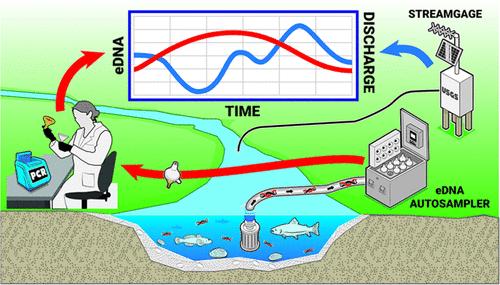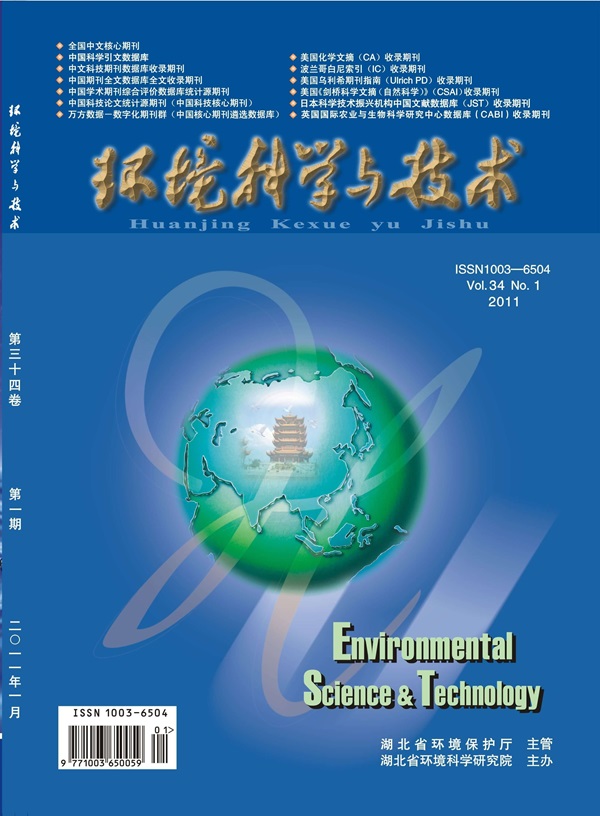自动 eDNA 采样器在内陆水域的实地试验
IF 10.8
1区 环境科学与生态学
Q1 ENGINEERING, ENVIRONMENTAL
引用次数: 0
摘要
环境 DNA(eDNA)分析已成为一项变革性技术,但样本采集方法缺乏标准化,以有效频率采样需要大量的实地工作。能够高频率采样的自主 eDNA 采样器为解决这些问题提供了可能。我们介绍了美国地质调查局快速环境 eDNA 评估和部署计划& 网络 (READI-Net) 项目中使用自主 eDNA 采样器原型进行的四项案例研究的结果。这些案例研究包括在一系列河流栖息地短期部署 eDNA 自动取样器(Smith-Root),目的是(a)确定从高频自动取样中可以获得哪些启示,以及(b)将这些自动取样与人工采集的样本进行比较。高频自动采样揭示了 eDNA 浓度的高时间变异性,并就 eDNA 与环境协变量(如排水量和浊度)的关联提供了有价值的见解。基准评估表明,自动采样的检测率与人工采样相似,获得的 eDNA 数量也相似或更多。在自动取样器的现场对照中,我们确实发现了极少的携带污染。我们的结论是,eDNA 自动取样器可以减少后勤取样障碍、实现采集方法标准化并明确环境协变量对 eDNA 结果的影响,从而有可能改进淡水生物监测工作。本文章由计算机程序翻译,如有差异,请以英文原文为准。

Field Trials of an Autonomous eDNA Sampler in Lotic Waters
Environmental DNA (eDNA) analysis has become a transformative technology, but sample collection methods lack standardization and sampling at effective frequencies requires considerable field effort. Autonomous eDNA samplers that can sample water at high frequencies offer potential solutions to these problems. We present results from four case studies using a prototype autonomous eDNA sampler as part of the U.S. Geological Survey’s Rapid Environmental eDNA Assessment and Deployment Initiative & Network (READI-Net) project. These case studies involved short-term deployments of an eDNA autosampler (Smith-Root) across a range of riverine habitats with the objectives of (a) identifying what insights could be gained from high-frequency autosampling and (b) benchmarking these autosamples against manually collected samples. The high frequency autosampling revealed high temporal variability of eDNA concentrations and provided valuable insights about eDNA associations with environmental covariates, such as discharge and turbidity. Benchmarking assessments indicated autosamples had similar detection rates to manual samples and obtained similar or greater eDNA quantities. We did find minimal carryover contamination in autosampler field controls. We conclude that eDNA autosamplers have potential to improve freshwater biosurveillance by reducing logistical sampling barriers, standardizing collection methods, and clarifying the influence of environmental covariates on eDNA results.
求助全文
通过发布文献求助,成功后即可免费获取论文全文。
去求助
来源期刊

环境科学与技术
环境科学-工程:环境
CiteScore
17.50
自引率
9.60%
发文量
12359
审稿时长
2.8 months
期刊介绍:
Environmental Science & Technology (ES&T) is a co-sponsored academic and technical magazine by the Hubei Provincial Environmental Protection Bureau and the Hubei Provincial Academy of Environmental Sciences.
Environmental Science & Technology (ES&T) holds the status of Chinese core journals, scientific papers source journals of China, Chinese Science Citation Database source journals, and Chinese Academic Journal Comprehensive Evaluation Database source journals. This publication focuses on the academic field of environmental protection, featuring articles related to environmental protection and technical advancements.
 求助内容:
求助内容: 应助结果提醒方式:
应助结果提醒方式:


